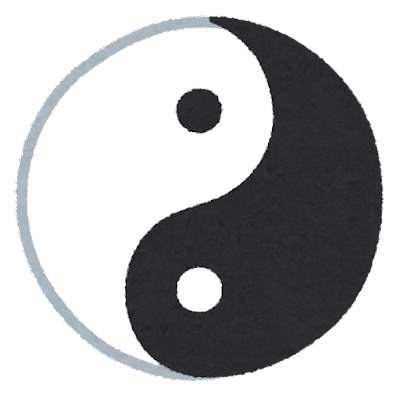That save the world during the once-in-a-thousand-year global turmoil.
■1000年に1度の地球規模の動乱期に、世界を救う「日本語のもつ音韻の力」と、「古神道」、「陰陽道」の教えとは?
■ About Japanese phonology
All phonemes used in Japanese can be expressed by “kana”, which is a “character unique to Japan”.
The basic is “Japanese syllabary + n”.
The five vowels are “Ah, I, U, E, O”.
In addition, there are 45 character sounds that combine 5 vowels and consonants.
For example, “ka, ki, ku, ke, ko” is a combination of “K consonants” and “five vowels”.
①”Ah, I, U, E, O”
②”ka, ki, ku, ke, ko”
③ S consonants and 5 vowels: “Sa, Shi, Su, Se, So”
④ T consonants and 5 vowels: “ta, chi, tsu, te, to”
⑤ N consonants and 5 vowels: “Nah, ni, nu, ne, no”
⑥ H consonants and 5 vowels: “ha,hi, fu, he, ho”
⑦ M consonants and 5 vowels: “ma, mi, mu, me, mo”
⑧ Y consonants and 5 vowels: “Ya, Yi, Yu, Ye, Yo”
⑨ R consonants and 5 vowels: “ra, ri, ru, re, ro”
⑩ W consonants and 5 vowels: “Wa, wi, wu, we, wo”
⑪ Sound expressed by NN consonants: “N”
The dakuon=”Voiced sound” : “ga, za, da, ba,” line 5 sounds (total 20 sounds)
and
the handakuon=”Semi Voiced sound”: “pa, pi, pu, pe, po” line 5 sounds are added to this.
Furthermore, there are five sounds in the line “Kya, Sha, Cha, Nya, Hya, Mya, Rya”.
In addition, there are five sounds in the “Gya, Ja, Bya” line.
There is no independent pseudonym for these 10 sounds.
■日本語の音韻について




■”Japanese phonology”, “phonology expressed in Ko-Shintō” and “Onmyodo”
■「日本語の音韻」と「古神道で表す音韻」と「陰陽道」
■Onmyōdō
From Wikipedia, the free encyclopedia
Onmyōdō (陰陽道, also In’yōdō, lit. ‘The Way of Yin and Yang’) is a system of natural science, astronomy, almanac, divination and magic that developed independently in Japan based on the Chinese philosophies of yin and yang and wuxing (five elements).
The philosophy of yin and yang and wu xing was introduced to Japan at the beginning of the 6th century, and influenced by Taoism, Buddhism, and Confucianism, evolved into the earliest system of Onmyōdō around the late 7th century. In 701, the Taiho Code established the departments and posts of onmyōji who practiced Onmyōdō in the Imperial Court, and Onmyōdō was institutionalized.
From around the 9th century during the Heian period, Onmyōdō interacted with Shinto and Goryō worship (御霊信仰) in Japan, and developed into a system unique to Japan.
Abe no Seimei, who was active during Heian period, is the most famous onmyōji (Onmyōdō practitioner) in Japanese history and has appeared in various Japanese literature in later years.Onmyōdō was under the control of the imperial government, and later its courtiers, the Tsuchimikado family, until the middle of the 19th century, at which point it became prohibited as superstition.
https://en.wikipedia.org/wiki/Onmy%C5%8Dd%C5%8D
■陰陽道とは?
Wikipediaから引用
陰陽道(おんみょうどう、おんようどう、いんようどう)は、陰陽寮で教えられていた天文道、暦道といったものの一つ。これら道の呼称は大学寮における儒学を教える明経道、律令を教える明法道等と同じで国家機関の各部署での技術一般を指す用語であり、思想ないし宗教体系を指す用語ではない。古代の中国で生まれた自然哲学思想、陰陽五行説を起源として日本で独自の発展を遂げた呪術や占術の技術体系である。
陰陽道に携わる者を陰陽師と呼んでいたが、後には陰陽寮に属し六壬神課を使って占いをし、除災のために祓(はらえ)をする者全てが陰陽師と呼ばれるようになった。陰陽師集団を陰陽道と呼ぶことがある。
平安時代中期~後期以降に陰陽道宗家となった家系としては、安倍氏とその嫡流の末裔・土御門家および、賀茂氏とその嫡流の末裔・勘解由小路家があった(後述)が、勘解由小路家は戦国時代から江戸時代初期にかけて断絶し、賀茂氏庶流・幸徳井家は明治以降消息不明となった。現代においては、土御門家およびその庶家・倉橋家の子孫が健在するが、明治維新以降は陰陽道との関わりを絶たれ(後述)、現代に至っては全く陰陽道と無縁である。福井県大飯郡おおい町に現存する神道の教派・天社土御門神道は、歴史的に陰陽道および土御門家と関わりのある宗教団体ではあるものの、関係者は土御門家の末裔ではない。
陰陽道 – Wikipedia


